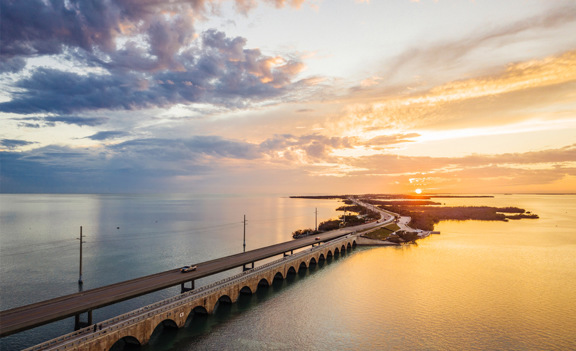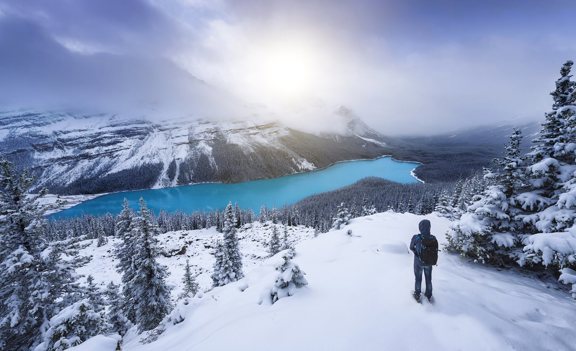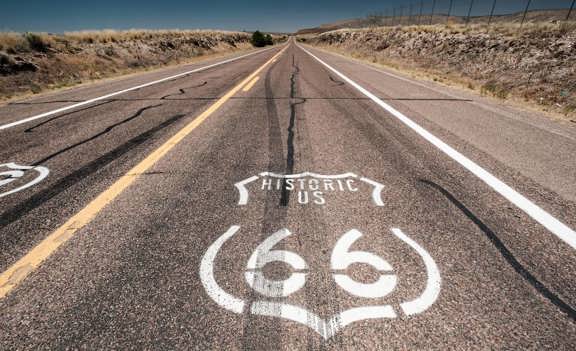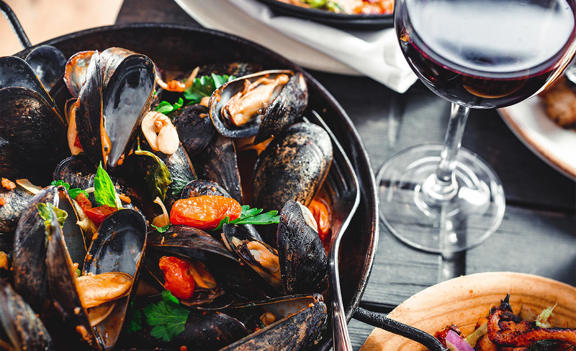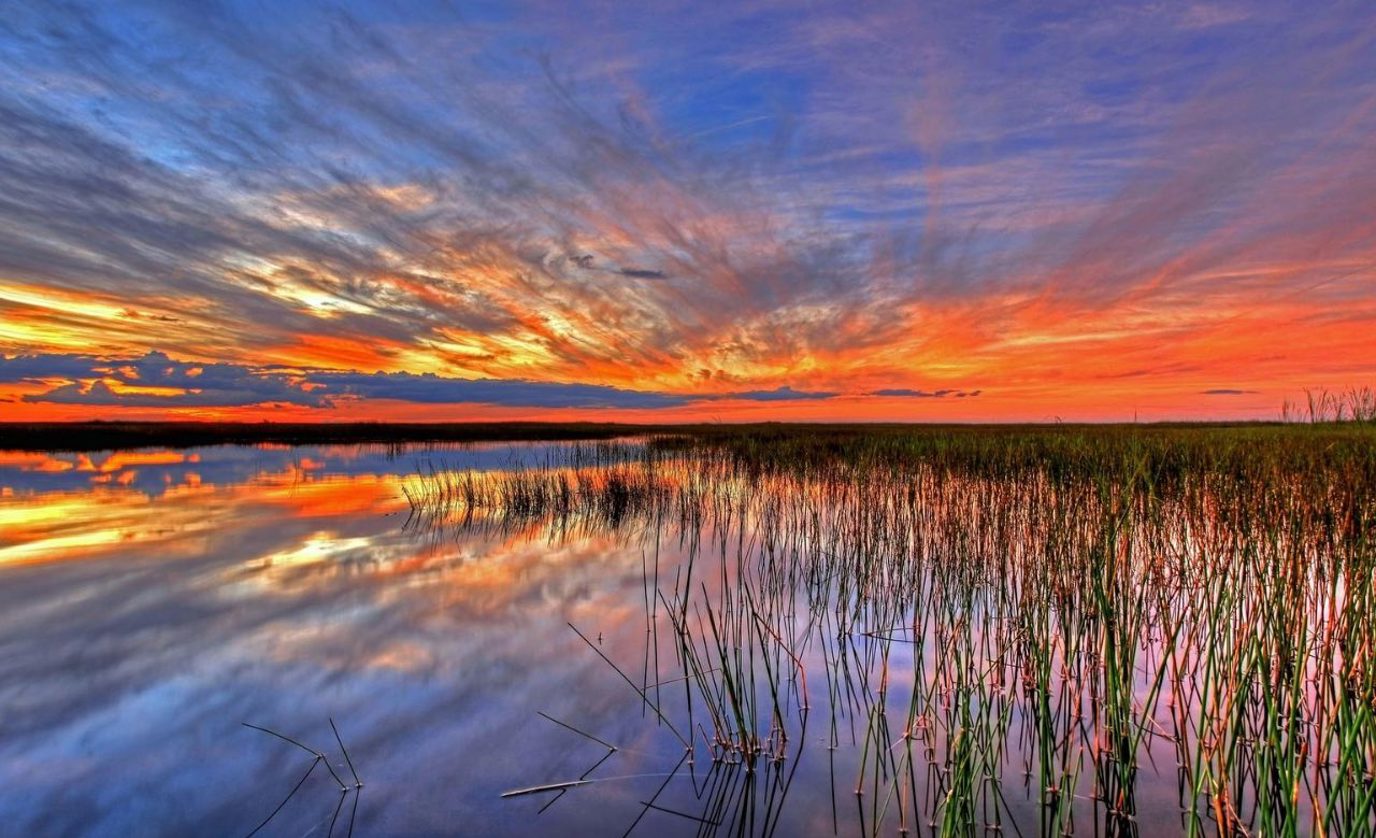

Few destinations in the continental United States offer the combination of sun-soaked beaches, turquoise waters, and endless adventure quite like the Florida Keys. A Florida Keys road trip is the ultimate way to experience this tropical paradise, allowing you to move at your own pace and explore everything from vibrant coral reefs to quirky roadside attractions.
Traveling by RV makes the journey even more rewarding. With the freedom to linger at scenic viewpoints, camp near pristine beaches, and wake up to breathtaking sunrises over the Atlantic Ocean, you can enjoy the Keys on your schedule. Road tripping through this part of the country means embracing the adventure of the open road, with the salty ocean breeze and the flexibility to stop wherever catches your eye—no rushed hotel check-ins or strict timelines to meet.
This guide will break down the ultimate Florida Keys road trip itinerary, starting in Key Largo and ending in Dry Tortugas, following the scenic and historic road trip route along the Overseas Highway. You’ll find must-see stops at iconic locations like Bahia Honda State Park, Islamorada, and the Seven Mile Bridge. You’ll also find tips for RV-friendly campgrounds, snorkeling spots, and a little bit about what makes the southern most part of the USA special. We’ll also highlight local seafood restaurants, hidden gems, and ideas for both quick highlight trips and slow-travel adventures.
Whether you’re a first-time visitor or a seasoned Florida traveler, this Florida Keys road trip guide will help you make the most of your journey, discover the natural and cultural treasures of the Keys, and experience the unique magic that makes this stretch of islands one of America’s most unforgettable destinations.
Planning Your Florida Keys Itinerary

Planning your stops and routes is key to enjoying this iconic stretch of islands. The Overseas Highway spans more than 120 miles from Key Largo to Key West, offering endless opportunities for adventure, relaxation, and exploration. How long you spend and which route you take depends on whether you’re seeking a quick highlight trip, a moderate experience, or a slow-travel adventure that lets you truly immerse yourself in island time. When planning your trip, be sure to consider hurricane season, which runs from June to November, as weather conditions and travel experiences can vary during this period.
As you drive the Overseas Highway, use each mile marker as a navigational reference to identify key stops and attractions along the route.
Exploring the Florida Keys – Upper, Middle, and Lower Keys
The Keys are generally divided into three regions: the Upper Keys, Middle Keys, and Lower Keys.
The Upper Keys are closest to the mainland, including Key Largo and Islamorada. The Middle Keys run through islands like Marathon and Big Pine Key, offering a quieter, more relaxed feel. The Lower Keys lead down to Key West, connected by the famous Seven Mile Bridge and small islands along the way.
Option 1: Quick Highlight Trip (3–4 Days)
For travelers short on time, this route hits the must-see locations while keeping the pace brisk. If you only have a limited window, consider half day trips to experience the key highlights without committing to full-day excursions.
-
Day 1: Start in Key Largo, snorkel at John Pennekamp Coral Reef State Park, and enjoy waterfront dining.
-
Day 2: Pass through Islamorada, stopping for sport fishing, casual shopping, and a quick photo with the key deer on Big Pine Key.
-
Day 3: Spend the morning at Bahia Honda State Park, then continue to Key West for sunset at Mallory Square and a stroll through Duval Street.
Option 2: Classic Florida Keys Road Trip (5–7 Days)
A balanced itinerary for those who want to see more sights without rushing.
-
Days 1–2: Explore Key Largo and the surrounding coral reefs. Take a boat tour or kayak through mangroves, and enjoy the variety of state parks available for outdoor activities.
-
Day 3: Stop in Islamorada for fishing and local art galleries. Optional beach time at Anne’s Beach.
-
Day 4: Visit Big Pine Key, spotting the endangered key deer, then unwind at Bahia Honda State Park.
-
Days 5–6: Arrive in Key West, exploring historic sites and neighborhoods within easy walking distance, plus a sunset sail.
Option 3: Slow-Travel, Immersive Trip (7–10+ Days)
Perfect for lingering, photographing, and discovering the Keys at a relaxed pace.
-
Days 1–3: Spend extra time in Key Largo, enjoying scuba diving or a guided snorkeling adventure at the coral reefs.
-
Days 4–5: Explore Islamorada, indulge in local seafood restaurants, and spend time kayaking, paddleboarding, or using a paddle board to explore mangroves and calm waters.
-
Days 6–7: Stay in Big Pine Key and Bahia Honda State Park, exploring hidden beaches and nature trails while photographing wildlife. Enjoy a picnic lunch at a scenic spot to make the most of your time outdoors.
-
Days 8–10+: Spend multiple nights in Key West with cultural excursions, art walks, and a day trip to Dry Tortugas National Park for snorkeling and history.
Additional Tips for All Trips
-
Best Time to Travel: Spring or fall offers mild temperatures and fewer crowds.
-
RV Prep: Cruise America RVs provide options suited for narrow Keys roads, easy parking, and comfort during longer stays.
-
Packing & Gear: Bring snorkel gear, sun protection, a camera, water shoes, and a portable cooler for on-the-go snacks. At major parks or refuges, stop by the visitor center for maps, educational exhibits, and local tips.
No matter which option you choose, careful planning ensures your Florida Keys road trip maximizes adventure, photo ops, and relaxation along this stunning stretch of islands.
Key Largo

Key Largo is the perfect first stop on your Florida Keys road trip, offering turquoise waters, vibrant marine life, and lush mangrove landscapes. Visitors flock here for world-class snorkeling and diving in the John Pennekamp Coral Reef State Park, where colorful coral gardens and abundant tropical fish make every underwater adventure unforgettable. Boating, kayaking, and eco-tours provide easy access to the mangroves and coastal waters, while local seafood restaurants offer a taste of the Keys’ freshest catches.
Top Activities & Attractions:
-
Snorkel or dive at Christ of the Abyss or Molasses Reef.
-
Paddle through mangrove tunnels on a kayak or guided eco-tour.
-
Take a glass bottom boat tour at John Pennekamp Coral Reef State Park for a family-friendly way to view the reefs.
-
Visit local art galleries and shops featuring island-inspired works.
-
Sample fresh seafood at waterfront restaurants.
After exploring the water, consider visiting a local wild bird sanctuary to learn about bird rescue and rehabilitation efforts in the area.
Key Largo is RV-friendly, with campgrounds like John Pennekamp and Ocean Reef Club offering convenient access to the island’s main attractions. Driving is straightforward, but narrower roads mean smaller RVs are easier to navigate, and reservations are highly recommended during peak travel seasons.
Islamorada & Big Pine Key

Islamorada and Big Pine Key capture the essence of the Florida Keys with laid-back island vibes, turquoise waters, and incredible opportunities to connect with nature. Islamorada, often called the “Sport Fishing Capital of the World,” offers deep-sea fishing, snorkeling, and diving adventures along vibrant coral reefs.
Just a short drive down the Florida Keys road, Big Pine Key is home to the famous Key Deer, a miniature species native to the area, making wildlife spotting a must-do experience. Visitors can enjoy kayaking through calm waters, paddle boards as a popular amenity at local resorts, paddleboarding at sunrise, or exploring secluded beaches and mangrove preserves. Wildlife enthusiasts may also spot a sea turtle in the area.
Top Activities & Attractions:
-
Spot endangered Key Deer in their natural habitat on Big Pine Key.
-
Snorkel or dive at Alligator Reef and nearby coral sites.
-
Go sport fishing in Islamorada’s waters.
-
Kayak through Lignumvitae Key Botanical State Park or Indian Key Historic State Park.
-
Take a turtle hospital tour in Marathon Key to learn about sea turtle rehabilitation and conservation efforts.
Both islands are RV-friendly, with campgrounds like Long Key State Park and Bahia Honda providing scenic waterfront sites. RVers should note that parking in town centers is limited, but the parks offer easy access to trails, beaches, and local dining spots. Marathon Key is also nearby, offering additional campgrounds and attractions for travelers.
Bahia Honda State Park

Bahia Honda State Park, located on Bahia Honda Key—the prettiest Florida Key—is often hailed as one of the most beautiful stops on any Florida Keys road trip, featuring soft white sand beaches, crystal-clear waters, and panoramic views of the Seven Mile Bridge. It’s an ideal spot for swimming, snorkeling, or simply relaxing while taking in the stunning island scenery. The park’s shallow waters and thriving marine life make it a favorite destination for families and nature enthusiasts alike.
Top Activities & Attractions:
-
Swim or snorkel at Calusa Beach and Sandspur Beach.
-
Walk or bike along the old Overseas Railway bridge remnants.
-
View or photograph the historic Bahia Honda Railroad Bridge, a must-see for its history and scenic vistas.
-
Enjoy picnicking in shaded areas with scenic water views.
-
Spot local wildlif, including tropical birds, fish, and occasional sea turtles.
For RV travelers, Bahia Honda State Park offers convenient campsites with full hookups and easy access to both beaches and nature trails. Arrive early during peak season to secure a spot, and take advantage of the peaceful surroundings for an overnight stay. This stop also makes for a great base to explore nearby islands or catch a spectacular sunset over the water.
Key West

Key West is the southernmost point of the continental United States and the crown jewel of the Florida Keys road trip. Known for its vibrant culture, lively streets, and pastel-colored architecture, Key West offers visitors a mix of relaxation, adventure, and endless charm.
The scenic Key West drive is a highlight of any trip to the region. With much of the town compact and easy walking distance, it’s perfect for exploring without worrying about parking or driving. From waterfront bars to quirky boutiques and historic neighborhoods, Key West has something for everyone. Take a walking tour of Key West's historic sites to fully immerse yourself in its unique atmosphere.
Top Activities & Attractions:
-
Stroll down Duval Street for local shops, cafés, and nightlife.
-
Visit Mallory Square for the daily sunset celebration with street performers and food vendors.
-
Explore the iconic southernmost point marker for a classic photo op.
-
Snorkel or dive at nearby coral reef sites.
-
Check out Hemingway’s House and other literary landmarks.
-
Visit the Key West Aquarium to see marine exhibits and local wildlife.
-
Tour a legal rum distillery for tastings and cocktails.
Experience the vibrant local nightlife with live music at bars and restaurants throughout the city. Don’t miss Sloppy Joe's, a must-visit historic bar on Duval Street known for its lively atmosphere and connection to Ernest Hemingway.
RV travelers can stay at several nearby campgrounds and RV parks, many of which provide shuttle services into town and offer free parking as a convenient amenity. Staying slightly outside the main hub allows you to enjoy the convenience of Key West while keeping your vehicle safe and accessible for day trips to surrounding islands. Key West also serves as a perfect jumping-off point for excursions to nearby snorkeling spots, sunset cruises, or the Blue Heaven dining experience.
Dry Tortugas National Park

Located about 70 miles west of Key West, Dry Tortugas National Park is a remote paradise that’s famous for its turquoise waters, vibrant coral reef, and historic Fort Jefferson. Accessible only by boat or seaplane, this park offers a unique opportunity to step off the beaten path and immerse yourself in pristine natural beauty and history. It’s a must-visit for those looking to combine adventure, snorkeling, and a touch of history during their Florida Keys road trip.
Top Activities & Attractions:
-
Snorkeling among colorful coral reef ecosystems teeming with tropical fish.
-
Touring Fort Jefferson, a massive 19th-century coastal fortress.
-
Kayaking or paddleboarding in calm, crystal-clear waters.
-
Birdwatching and exploring secluded beaches.
While you can’t drive an RV directly into the park, RV travelers can base themselves in Key West or nearby Bahia Honda State Park for overnight stays and easy access to boat tours or seaplane departures. Bring plenty of water, sunscreen, and gear for snorkeling or swimming to make the most of your day in this remote location. Dry Tortugas is ideal for those who want to experience an unspoiled natural wonder and enjoy their Florida Keys trip beyond the main islands.
Key West History

Key West’s history is a fascinating tapestry of maritime enterprise, multicultural influence, and strategic military importance, woven into the broader context of Florida Keys history—a rich tapestry that extends well beyond Key West itself. Long before European contact, the island was home to indigenous peoples, including the Tequesta, who utilized the rich marine environment for fishing and trade. Spanish explorers arrived in the 16th century, but it wasn’t until the early 1800s that American settlers established permanent communities, drawn by the island’s prime location along major shipping lanes.
Key West’s wealth in the 19th century came largely from shipwreck salvage operations. Known as the “wrecking capital of the world,” local salvagers would rescue cargo from stranded ships, a highly lucrative but dangerous business that attracted fortune seekers from across the globe. Alongside wrecking, cigar manufacturing, sponging, and salvaging industries fueled economic growth, bringing waves of Cuban and Bahamian immigrants, whose craftsmanship, cuisine, and traditions remain influential today.
The development of the Florida East Coast Railway played a pivotal role in connecting the Keys, including Key West, to the mainland, and its legacy can still be seen in the transformation of former railway bridges into scenic pedestrian walkways. During the Civil War, Key West’s Union-held fortifications, particularly Fort Zachary Taylor, ensured it remained a critical naval stronghold. Later, the island played roles in Prohibition-era smuggling, World War II military operations, and the early days of the U.S. Coast Guard. Surviving hurricanes, economic booms and busts, and waves of immigration, Key West developed a resilience that is embedded in its character today.
Visitors can witness this history in its colonial-style architecture, meticulously preserved Victorian homes, and historic landmarks such as the Hemingway House, Mel Fisher Maritime Museum, and Key West Lighthouse.
Notable sites like the Seven Mile Bridge offer access to Pigeon Key, a historic island that once housed workers of the Overseas Railroad and now serves as a fascinating stop for those interested in the region’s past. Understanding these layers of history—from the wreckers and cigar makers to military fortifications—adds depth to a visit, showing how the island’s cosmopolitan, eclectic charm was built over centuries of maritime adventure, resilience, and cultural fusion.
Key West Culture

Key West’s culture is a living, breathing expression of its history, geography, and diverse population. The island’s small size and walkable streets encourage exploration, turning every alley and side street into a cultural discovery. From the bohemian galleries and art studios in Old Town to open-air cafes serving fresh seafood, creativity flows through the island’s veins.
Music and performance are central to Key West’s identity. Duval Street and the surrounding neighborhoods pulse with live jazz, blues, Caribbean rhythms, and contemporary rock. Street performers add a spontaneous, interactive element, while intimate venues like the Green Parrot Bar and The Studios of Key West highlight local talent. Annual festivals such as Fantasy Fest, a 10-day celebration of costume, art, and performance, and Hemingway Days, honoring the island’s literary legend, provide immersive cultural experiences that reflect Key West’s playful and inclusive spirit.
Food is another cultural touchstone. Influenced by Cuban, Bahamian, and Southern flavors, Key West’s culinary scene is both eclectic and authentic. From conch fritters and Key lime pie to fresh-caught seafood in waterfront eateries, the island’s cuisine tells a story of its people and environment. Quirky roadside attractions—like the Southernmost Point buoy, Little White House, and the Key West Butterfly & Nature Conservatory—further reflect a culture that blends history, nature, and eccentricity.
Key West’s culture thrives on diversity, artistic expression, and the freedom to embrace individuality. Whether strolling along cobblestone streets, catching a sunset at Mallory Square, or mingling at a local festival, visitors are invited to experience a community that celebrates creativity, inclusivity, and the joy of slow, mindful exploration. Every corner reveals a blend of history, artistry, and modern vibrancy that is uniquely Key West.
Hidden Gems in Key West
While landmarks like Duval Street, Hemingway House, and Mallory Square get much of the attention, Key West is full of lesser-known spots that reveal the island’s quirky charm and natural beauty. These hidden gems are perfect for travelers who want to explore beyond the typical tourist trail and experience Key West like a local.
Top Hidden Gems to Explore:
-
The Key West Garden Club at West Martello Tower – A peaceful oasis tucked inside a historic fort, featuring lush tropical gardens and stunning views of the Atlantic Ocean.
-
Fort East Martello Museum & Gardens – Offers a mix of history, art, and bizarre exhibits, including the legendary Robert the Doll, a creepy yet fascinating local tale.
-
South Beach & Fort Zachary Taylor’s Secluded Areas – While the main beach gets busy, there are tucked-away coves perfect for sunbathing, swimming, or enjoying a quiet picnic.
-
The Hemingway Cats – Wander through streets and alleys to spot the descendants of Hemingway’s six-toed cats—an unusual and charming part of local lore.
-
The Key West Cemetery – Known for its quirky tombstones and colorful epitaphs, this cemetery reflects the island’s humor, history, and creativity.
-
Bahama Village Murals – Stroll through this historic neighborhood to see vibrant murals celebrating Key West’s Caribbean heritage and artistic spirit.
-
Fort Taylor’s Hidden Snorkeling Spots – While the fort is known, its small surrounding coves and reefs are perfect for snorkeling with fewer crowds than other popular areas.
These hidden gems offer a mix of nature, history, art, and playful surprises, making them ideal stops for those seeking a more personal, immersive experience in Key West. Whether wandering through quiet gardens, discovering local street art, or encountering quirky island legends, visitors can uncover the unexpected side of the Florida Keys that most tourists miss.
Explore Key West With Cruise America
From the turquoise waters of Key Largo to the colorful streets of Key West, a Florida Keys road trip offers endless adventure, breathtaking scenery, and the freedom to explore at your own pace. Whether you’re snorkeling among vibrant coral reefs, watching the sunset from the Seven Mile Bridge, or discovering quirky hidden gems tucked away in the island’s nooks and crannies, the Keys deliver unforgettable experiences for every traveler.
Book your Cruise America RV today and experience the Florida Keys like never before.
